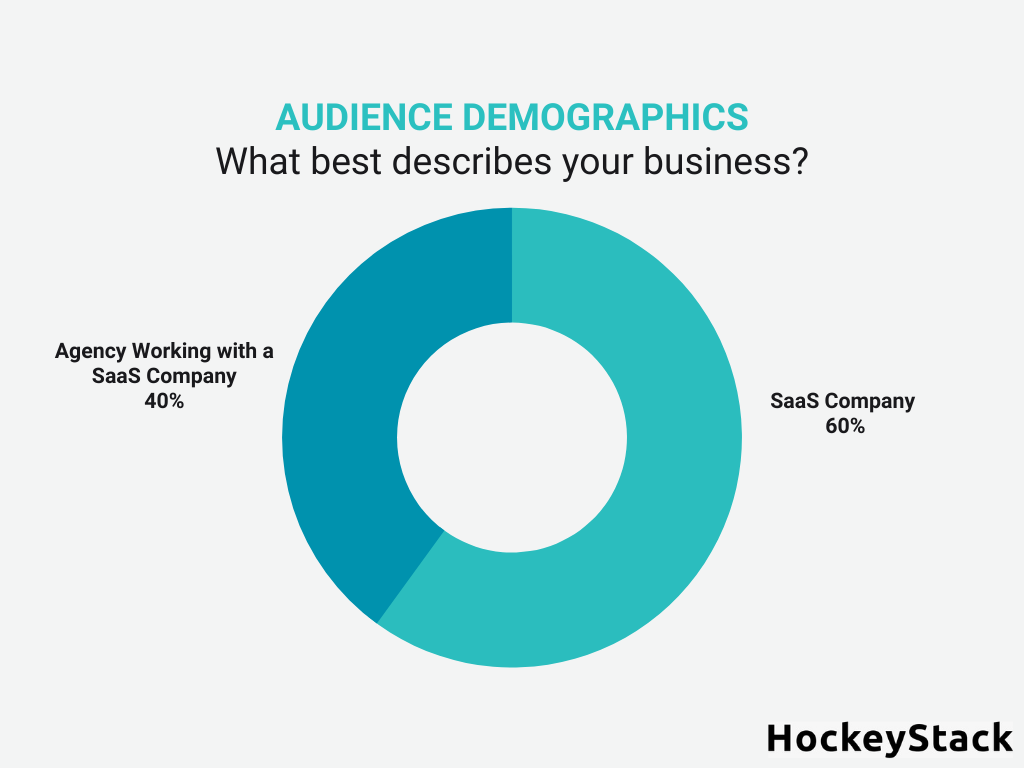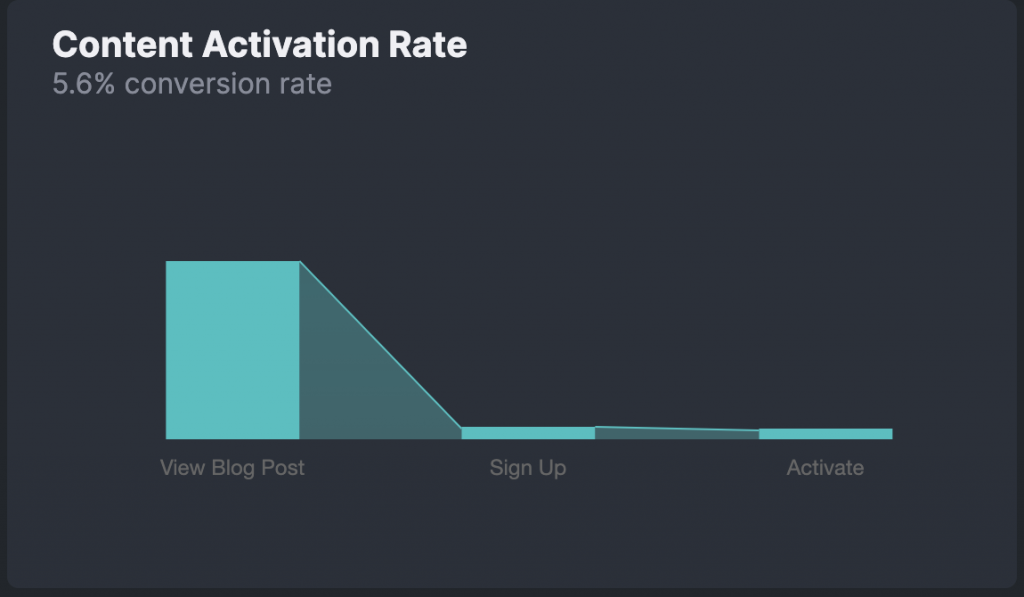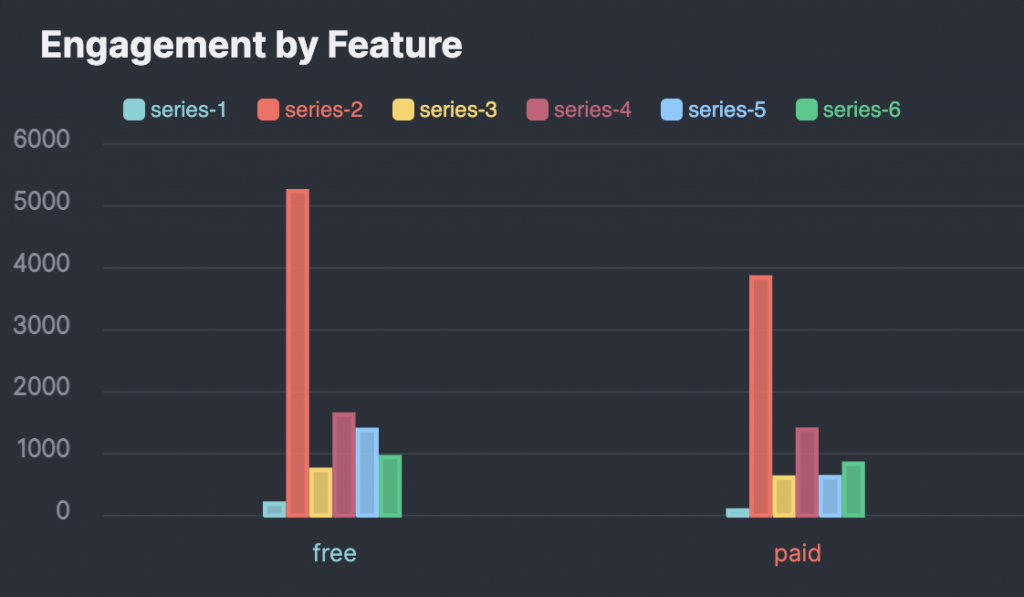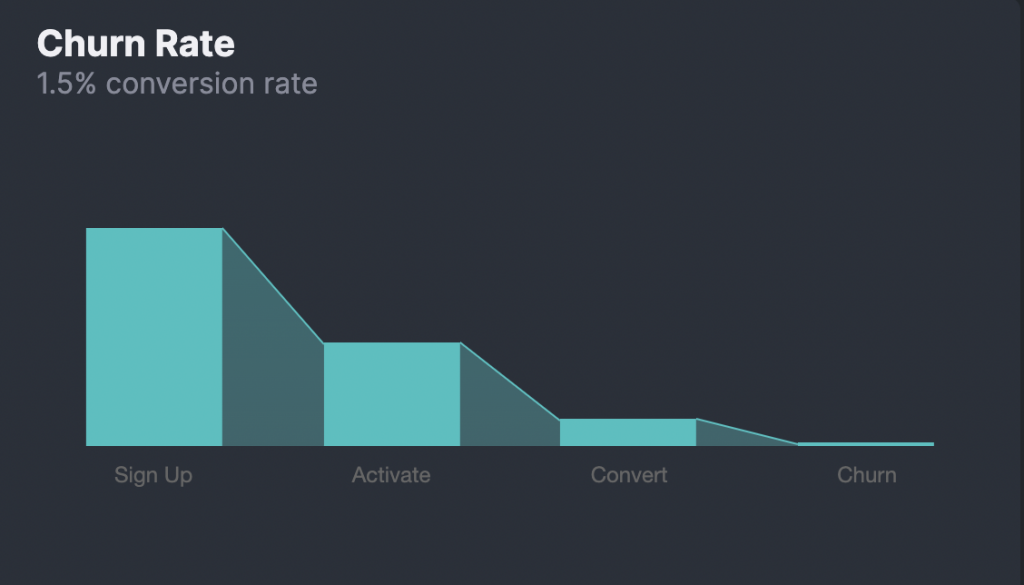B2B SaaS Marketing Metrics: 8 Experts Share Their Opinions
During their first three years, SaaS companies dedicate 80 to 120% of their whole revenue to marketing. As they become more established, companies continue to allocate 15% of their entire budgets to marketing each year. When so much money is spent on marketing, it’s vital to know whether or not it’s returning to the company in the form of new leads and retaining customers.
This is where B2B marketing metrics come into play. To understand if your marketing efforts are fruitful, you should track revenue, churn, customer acquisition costs, and more. However, you shouldn’t be blindly monitoring metrics. Choosing the metrics you’ll track is as important as analyzing your marketing strategy: luckily, experts have gone through this process, and their opinions can help you. To learn about their views and the right metrics for your business, keep reading.

Metrics That B2B Marketing Teams Should Track
Signups and Revenue
Why is measuring signups and revenue important?
The ultimate goal of any marketing effort is to attract more customers. With your inbound marketing strategy, you aim to reach the right prospects; with your content, you desire to create brand awareness for leads that do not yet know you; and with your ads and campaigns, you aim to convert these people into customers. These efforts have the end goal of getting people to use your brand’s tools and increase your revenue with their payments. Thus, to understand whether or not you’re reaching your end goal, you should be tracking signups and revenue.
However, your end goal shouldn’t be your only objective in marketing. Your goal should be to be of service to customers with your tools and to think about their needs. When these goals are your priority, signups and revenue will increase naturally. As Yaagneshwaran Ganesh from Avoma puts it, “It’s not the ads you run, or the content you create – it’s simply about the revenue that your action contributes to. And that happens when you do things in the best interest of the customer, not yourself and not necessarily in a measurable way.”
How can you measure signups and revenue?
There are different methods you can follow to measure these two metrics. Yaagneshwaran Ganesh prefers to use a more qualitative approach: “The simplest way to measure revenue impact is – asking your prospect ‘How did you find us?'” This helps you identify the sources of revenue. If your customers found you from an article you posted, you know that the money you had put into content marketing returned to you as a customer.
Or, you may follow a more quantitative approach like Barracuda’s Ilya Gaidarov, who prefers to track Annual Recurring Revenue. He says: “you’re maximizing growth or profitability. ARR keeps you honest and forces alignment with end dollars.”
Churn
Why is measuring churn important?
Measuring the impact of your marketing efforts on your revenue is essential, especially if you’re a new B2B company. However, not all SaaS companies have to prioritize measuring their revenue. As Victor Lijdola, a Founder at Premium Content Shop, says, “some teams have already hit the revenue goals at the stage they’re in, and they’re looking to retain users and reduce churn.” Your churn rate measures the number of customers you’ve lost over a certain period. As an established company, your focus should also be on your churn rates to ensure that:
- Your marketing efforts aren’t only used to catch new leads. Marketing is also about genarting demand from existing customers: this is important as acquiring a new customer can be up to five times more expensive than retaining an old one. “Every SaaS product will have a churn,” says Vikas Kalwani, the Head of Partnerships at uSERP. “However, if the monthly churn is larger than 3-8%, you risk losing 32-50% of your users.” Re-acquiring that many customers is much costlier.
- You have a solid customer base and source of revenue. If you’re losing 30 to 50 percent of your users like Kalwani says, then you can’t depend on your recurring revenue while making investments. If you’re constantly losing customers and spending on acquiring new ones, you’re not going to have a secure source of funds.
How can you measure churn?
You can measure churn annually, monthly, or by any period you want to. However, you shouldn’t only look at the rate of customers that you have lost by the end of the month. You should know the profiles of these customers, understand their journey, and see the sources that they come from. To do this, you should use good reporting and analytics software such as HockeyStack.

Taking a critical look at the statistics can reveal important information. For instance, from this dashboard, you can see that the users involved with inbound marketing have the highest churn rates. This could be due to your product’s lack of inbound marketing features. The same idea applies to the Churn by Referrer dashboard below.

Customer engagement
Why is measuring customer engagement important?
To retain their subscriptions, you have to keep your customers engaged. This connects back to the idea that “retaining existing customers is cheaper than acquiring new ones.” If customers constantly use your tools and their various features and generally interact with your brand, you can be sure that they’ll stay.
You can increase engagement in different ways at each step of a customer’s journey. When your customers start to use your tools, an effective onboarding process will show them the features they can engage with. When they’ve been working with your brand for a while, you should be taking their constant feedback in the form of surveys and improving your tools based on their input.
How can you measure customer engagement?
Customer engagement isn’t a metric in and of itself. Customers’ session durations, feature adoption rates, and even LTVs may play a role in engagement.
For instance, one of the metrics related to customer engagement is the time spent on-page. This metric can be used to measure engagement with your marketing content and your platform. Precious Oboidhe, a Content Marketer at Foundation, says that you can use this engagement metric to “know the marketing assets that your audience resonates with. Informed by this data, you can create other pieces related to the content that makes your audience stick around for longer. This also makes the distribution of these new assets easy because you’ve validated that the topic is one your audience considers interesting.”
To measure the engagement with your content, you can also use look at the clicks from different sources. The Head of Marketing at Friday, Josh Spilker says that “Clicks from search or social are important” as they show “that people are interested even if they’re not converting.”
MQLs
Why is measuring MQLs important?
Generating leads is an integral part of marketing, but unfortunately, not all of these leads end up as a part of your customer base. This is because of the difference between leads and qualified leads: leads are the people who show interest in your products. On the other hand, qualified leads are the interested people who also fit into your ideal customer profile and who are more likely to become paying customers.
Looking at MQLs is essential for SaaS companies because trying to advertise to all types of customers is not efficient money-wise or time-wise. An efficient marketing strategy should be generating leads that sales teams can easily convert into paying customers.
How can you measure your MQLs?
First, you need to define what a qualified lead looks like for your business. The steps you can follow are:
- Start out by defining your buyer persona: outline the demographic and financial details as well as interests and behaviors.
- Get feedback from your sales team: as I’ve stated before, the point of tracking MQLs is to make the job of sales easier. Your sales team knows the types of customers that are likely to buy and upgrade, so take their opinions.
- Analyze behavioral data: via analytics software like HockeyStack, you can track the journeys of customers with high LTVs. You can understand the interests and details of the people who are likely to buy by following trends in behavioral data.
After you’ve used all of the information, data, and feedback to develop a good definition, you can start to track the number of MQLs that your marketing strategies generate.

Lead to customer rate
Why is measuring your lead to customer rate important?
Also known as the lead conversion rate, your lead to customer rate measures the proportion of qualified leads that end up buying from your brand. This metric shows you whether or not your marketing strategy propels leads down your SaaS sales funnel. Is your marketing strategy good at generating brand awareness, inciting interest and action, and finally retaining these customers? This is the essential question that the lead conversion rate answers for you.
How can you measure your lead to customer rate?
Measuring your lead to customer rate requires only a simple calculation:
Lead to customer rate = [ # of Qualified Leads That End Up in Sales / # of Qualified Leads ] x 100
It’s logical to look at qualified leads: they are the types of prospects that your marketing team cannot afford to miss. However, you may also use this same calculation for all leads your business generates.
CAC
Why is measuring CAC important?
Short for Customer Acquisition Cost, CAC is the amount your business has to spend before acquiring a new customer. As I’ve explained under churn, acquiring new customers is costly, and new SaaS companies must balance their revenue with their CACs. The CAC should also be used to find the most profitable customer segments for your brand. You can do this by looking at LTVs together with the CAC.
How can you measure CAC?
There are many ways to calculate your CAC, but the most simple one is when you add up all the marketing and sales costs over a period and divide that cost by the number of customers you have acquired. For instance, if you’ve spent $8000 in a month on marketing and sales and acquired 100 new customers, your CAC will be $8000/100 = $80.
The problem with this calculation is that it acts as if all of your marketing efforts are equally expensive and directed at the same customer types. To account for this discrepancy, you may choose a more detailed model.
Content Lead Quality
Why is measuring Content Lead Quality important?
Content marketing is one of the most popular marketing strategies in the status quo: 82% of businesses have reported using it in 2021. While this means that content marketing is an efficient strategy, it also means that there is a lot of content on the internet and that yours has to compete with thousands of other articles. Thus, while pouring money towards your content strategy, you should ensure that it’s being read and that its readers are qualified leads.
A Founder at VEC, Victor Eduoh, says, “Every B2B SaaS marketing team concerned with driving real demand should be tracking content consumption. It’s no longer enough to amass all the traffic you can. The real question is: Are people actually consuming your content?” He is right: your content should be informative, and prospects should engage with it so that you get your money’s worth.
“This stems from the principle that ‘he who informs you controls how you think.’ If you don’t produce exceptional content, track, and get prospects to actually consume it, how can you earn their attention, educate, and show them how to solve their problems with your product?” he adds.
Your Content Lead Quality measures everything Eduoh talks about: does your target audience consume your content? If the leads brought by your content are high quality, the answer is yes.
How can you measure Content Lead Quality?
This question connects back to your business’s definition of a quality lead. Once you have a solid description, you can use HockeyStack’s Content Marketing Dashboard to track numbers. By looking at the conversions from a post, you can deduce whether it reached the right audience or not.

Content Activation Rate
Why is measuring your Content Activation Rate important?
Your Activation Rate measures the proportion of users who complete a specified milestone during onboarding or early in their customer journeys. As Kirsty Finlayson, Head of Marketing at Chameleon, says, your activation rate is “a metric that all departments can contribute to.”
“Marketing attracts the right users, CS provides the right assistance, Product keeps pushing for the best software they can build (e.g., based on in-product feedback), and Product Marketing engages with in-app messaging to push new users to find value,” she adds.
Your Content Activation Rate is a modified version of your Activation Rate. It looks at how successful your posts are in communicating the value of your products, establishing a trustworthy image of your brand, and creating brand awareness.
How can you measure your Content Activation Rate?
Before tracking your Content Activation Rate, you should decide on the definition of an “activated user” similar to your description of MQLs. This definition could range from a user who utilizes a certain number of features to someone who spends a certain amount of time with your product.
When it comes to customizing metrics such as the Activation Rate for your own business, Head of Marketing at Captivate Talent, Jay Desai, says: “Every SaaS marketing team should be tracking a metric related to their unique offering. I think of this as an engagement metric based on a step or a certain set of steps unique to your business. Maybe you want to track x, y, and z steps that equal a successful onboarding (ex. for Facebook successful onboarding was adding seven friends – engagement went way up!).” By customizing metrics, you ensure that the B2B metrics you track reflect your company’s goals and needs. Again, you can use a customizable content marketing dashboard to measure this metric.

One Metric That Matters For SaaS Companies
What is “One Metric That Matters?”
One Metric That Matters (OMTM in short) is a phrase that Alistair Croll coined in his book Lean Analytics. As its name implies, OMTM is the primary metric that your marketing team focuses on. This metric is chosen to be the number that has the most significant effect on your company’s overall growth and can be any metric you can think of. For SaaS, an OMTM could range from the number of monthly visitors to retention, depending on your company’s type, size, and goal.
So, should your SaaS company have an OMTM? Is the OMTM beneficial for SaaS companies? Here’s what experts think:

Who Should Track Analytics At A SaaS Company?
Anyone in your team can do saaS analytics, and there is no correct answer to the question of “Who Should Track Analytics at a SaaS company?”
40% of responding experts think that the Head of Growth should do the tracking, the other 40% think that analytics could be the job of anyone in the Growth Team, and the remaining 20% believe that the CMO should be responsible for tracking analytics. The important thing is to ensure that the analytics is done in close communication with everyone in marketing and sales. This is the only way to use analytics to better your company holistically.

Other B2B SaaS Metrics You Should Track
Here’s a list of some product, revenue, and qualitative B2B SaaS metrics that you should track:
Feature Engagement
Why is Feature Engagement important for B2B SaaS?
In SaaS, feature engagement lets you understand how your users interact with your product’s features. With feature engagement, you can choose which elements on your product are used the most and not used much. When you determine your most used features, you can research why these features are used more than others. Thus, you can use these reasons to improve your less prominent features. Likewise, by identifying which of your features your users use less than other features, you can work to highlight your underutilized features.
How to measure Feature Engagement?

There are several stages to measuring feature interaction. First, you must identify the inputs required to see companies interact with your site’s feature. For example, how much time users spent on that feature or how long they actively used that feature.
To better understand your product’s engagement rate and each feature’s affect on revenue, you need marketing and revenue data on top of your product data.
MRR
Why is MRR important for B2B SaaS?
MRR is short for monthly recurring income. As the name suggests, MRR refers to the predictable revenue from the monthly services that the customer base on SaaS platforms recurs.
MRR is invaluable to you, especially if your company offers subscription-based pricing. Thanks to this metric, you can calculate your current expected earnings and predict where you can move your company’s earnings with various improvements.

How to calculate MRR?
Calculating MRR is relatively easy. You have to multiply your monthly subscriber count by your revenue per subscription.
MRR = (number of the subscriber of the monthly plan) * (average revenue per user)
LTV
Why is LTV important for B2B SaaS?
Lifetime value is a measure of the revenue a user generates for you over the time they use your service. If your users are satisfied with your service, they will remain users of your company for a more extended period. With lifetime value, you can determine how user experiences contribute to your company’s profitability.
Likewise, lifetime value indicates user loyalty. If your Lifetime Value is high, your users are satisfied with your service and have been using your service for a long time. That is important for your company’s reputation.
Another reason why tracking LTV is so important is its relationship with CAC (Customer Acquisition Cost). If your CAC has a higher value than your LTV, you will not be able to make a profit. Therefore, following your LTV has a large share in the yield of your company.
ACV (Annual contract value)
Why is ACV important for B2B SaaS?
ACV, or annual contract value, represents the amount of value a contract brings over the year. The term is often used in SaaS companies that do business on one or more year contracts.
Another reason for calculating ACV is to be able to compare this value with CAC. Based on your CAC value, you can calculate on average how long it will take to reach the targeted ACV profit. There is an inverse relationship between CAC and ACV, as between LTV and CAC. So the higher your CAC amount, the longer it will take to reach your target ACV.

How to calculate ACV?
ACV calculation is quickly done as follows:
ACV = (Total contract value(excluding one time fees)) / (Total years in the contract)
NPS
Why is NPS important for B2B SaaS?
In its simplest terms, Net Promoter Score (NPS) is a customer satisfaction survey based on the probability that your customers will recommend your product to someone else on a scale of 1 to 10. You should note that 80% of customers value online reviews as much as personal recommendations. In this way, you can understand more clearly how important NPS is.
In addition, NPSs allows you to learn about companies dissatisfied with your service. You can identify the common points between these companies. These commonalities may be industry, demographics, or age distribution in the company. According to these analyzes, you can determine which areas of your service are more appealing and in which areas it is lacking, and you can make improvements for a more inclusive system.
How to calculate NPS?
If a company has evaluated you between 0-6, they are not very satisfied with your service. The passives group is those who give 7-8 to your company. These companies have no complaints about your service, but they will not make an effort to recommend us to others. Those who support you are the ones who give you 9-10. Passives are not included in the NPS account. The NPS calculation is done as follows:
NPS = % promoters – % detractors.
As can be understood here, your NPS value can vary between -100 and +100. Of course, having this score as high as possible is essential for attracting new users to your company.
Answers to Churn Surveys
Why are churn surveys important for B2B SaaS?
Straightforwardly, churn surveys are short survey questions that you send to collect feedback from your user when they terminate the service they receive from you or drop their purchase. Your company needs to receive this feedback. Then, you can improve the product and keep your service interruptions to a minimum.
Although it is common for SaaS companies to send casualty surveys via email, there is usually a better way. You can deliver Churn surveys in in-app surveys and email surveys. In-app loss surveys often collect more feedback than email surveys. That is because in-app surveys appear within the app as soon as you unsubscribe. That means users are more likely to fill out a survey that pops up automatically.
Pro Tip:

How To Analyze Churn Surveys?
To analyze churn surveys, you must first ensure a churn survey suitable for analysis. A study with many open-ended questions is complicated to follow and interpret. For this reason, a questionnaire that consists of multiple-choice or scoring questions, on which you can put the system on an automatic basis, will be more prone to analysis.
Once you’ve made sure you have a good survey, consider data about why companies stopped using your service. In this way, you can replace the features that negatively affect users in your company with more beneficial ones. You can also predict what innovations you need to make.
Answers to Pricing Surveys
Why are Pricing Surveys important for B2B SaaS?
Pricing surveys are essential because they help you see how much people are willing to pay on average for your service. In this way, you can predict what the companies you expect to benefit from your service think about the pricing you have determined for your service. You can also choose the most optimal pricing in an increasingly competitive environment.
A well-organized pricing survey reveals your users’ price desires and willingness to buy. Using these surveys as an excellent tool to get ahead of your competitors is possible.
Conclusion
With so many metrics to choose from, tracking your company’s performance may seem like a challenge. That’s why it’s helpful to learn from the experience of other SaaS companies and experts. Marketing is about constantly improving your strategy based on performance. Use the list of B2B marketing metrics above to figure out which metrics need to be tracked for your company.
FAQ
The rule of 40 states that a healthy SaaS company’s growth rate and profit should add up to 40%.
Similar to the OMTM, flywheel metrics are the metrics that drive business success. Marketers use flywheel metrics to focus on the numbers that indicate growth.
You should have marketing goals (related to revenue, growth, etc.) in mind and look for the metrics that will help you work towards those goals. You should know about the uses of each metric and see if they will help you optimize your marketing strategy.



